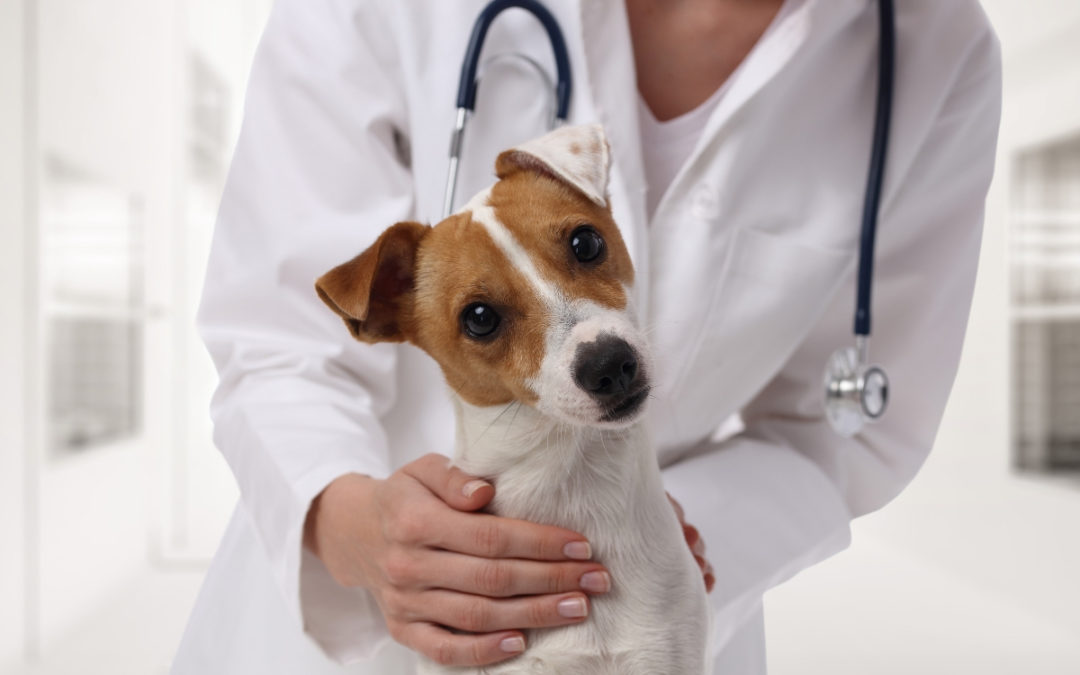We want your visit to Harbor View Veterinary Hospital to be as stress-free as possible, for both you and your dogs! If you have a dog who gets anxious coming to the vet, we’ve put together some tips to help you stay calm.
Leaving Home
For some dogs, the anxiety begins as soon as they are put in the carrier or the car. Pre-visit medications (eg, trazodone, gabapentin, benzodiazepines)1 or nutritional supplements with calming ingredients (eg, l-theanine, α-casozepine)2,3 can help decrease the dog’s stress. Always have the client perform an at-home trial of any of these medications or supplements beforehand to assess the dog’s response.
Signs of Stress
Stress signals include the following:
- Behavior change (eg, a panting dog suddenly stops, stays still, or freezes)
- Growling, snapping, and/or biting
- Lip licking
- Looking sideways so more of the whites of the eyes (whale eye) are visible
- Stepping away from the veterinarian or veterinary nurse and/or retreating to the owner—the ears may be back and the tail either tucked or up and stiff
- Stretching to take a treat instead of moving readily forward
Waiting Room
The client care team can make many accommodations in the waiting room to help make the veterinary visit low stress before the dog enters the examination room. Unruly behavior is a sign of anxiety; team members who notice an unruly dog can move the client and patient to an empty room or suggest they wait in the car until the veterinarian is ready to see them. An unruly dog should be separated because other clients and patients in the waiting area may stimulate the dog even more, especially as they enter and exit or his or her behavior may upset other patients in the room.
Team members must be able to recognize early signs of anxiety and aggression, as well as unruly behavior, because they may be able to take steps to calm the dog with treats or toys brought from home. (See Signs of Stress & Acceptable Treats.)
If the dog is put in a separate room, plug-in pheromones and classical music may help set a calming tone.4-6 If the client and dog wait outside, they should enter through a less crowded or less frequently used entrance, if possible, to avoid further interactions with other clients and patients in the waiting area.
Acceptable Treats
- Anxious dogs can sometimes be distracted with high-value treats such as:
- Canned dog or cat food
- Gerber Graduates chicken or turkey sticks made for babies
- Peanut butter
- Soft dog treats
- Small pieces of cheese or meat
- Strained meat baby food
- Strained sweet potatoes for allergic dogs
- The baby food or canned food, or anything else mashable that the dog likes, can be placed in a bowl in front of the dog’s face for licking.
Examination Room Ins & Outs
The examination room can be the most stressful situation for a patient. Consider these suggestions:
Have the veterinarian or veterinary nurse already present and seated in the examination room when the client and dog enter, which will help prevent fear causing aggression when someone enters the room, where the dog is essentially trapped. Allowing the client and the dog to leave and re-enter the room at the same time as team members leave and return may also be helpful.
Consider where to perform the actual examination. Some dogs do better if they remain on the floor. For those better evaluated on the table, use a yoga mat or blanket to provide a more comfortable, warm surface that also gives the patient better traction.
Some dogs are frightened by self-raising tables. A dog too large to be easily lifted onto the table would do better if examined on the floor.
Be prepared to omit parts of the examination or forgo a stressful procedure (eg, taking a rectal temperature, trimming nails) if a dog appears hesitant, anxious, or worried.
Give the dog high-value treats or something that can be licked, so long as the treats are medically acceptable and the client confirms the dog has no food sensitivities. (See Acceptable Treats.) It may be possible to do parts of the examination and even give injections or draw blood while a veterinary nurse distracts the dog with treats—if a dog will not take the treats, he or she likely is too stressed.
Think of the little things. For example, because the needle will be dulled by going through the stopper, use a fresh needle after loading vaccine or medication into a syringe, which will make the injection less painful.
Give the dog medication to manage pain at an appropriate interval before a painful procedure.
Reevaluate when and how to continue the examination at the slightest hint the dog is becoming stressed or uncomfortable. Handling and restraint may be considered, but active restraint sometimes causes more distress and resistance. Putting a muzzle on the dog would mean the examination could be completed but will increase stress and the dog may become defensively aggressive at a subsequent visit. (See Muzzles.)
If it does not seem possible to continue safely, stop and discuss with the client continuing another day and using nutritional supplements (eg, l-theanine, α-casozepine)2,3 and/or medications (eg, trazodone, gabapentin, benzodiazepines)1 at home before the visit to decrease the dog’s stress. If that is not possible, injectable sedatives may be indicated. If complete sedation is needed, the dog will need to return another day, fasted.
Keeping a veterinary visit low stress will help make the client happy to return and the dog easier to work with during subsequent visits, and keep the veterinary team happy to see them. Contact us today with any questions you may have!

